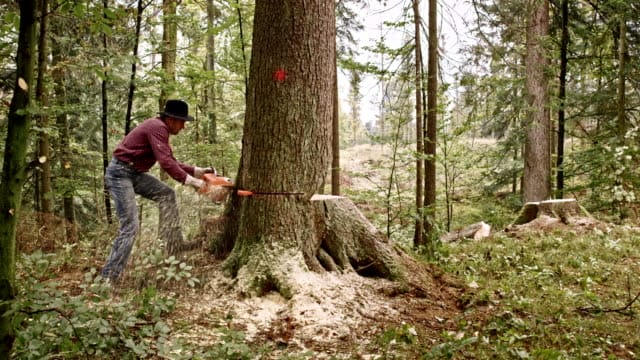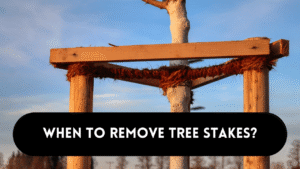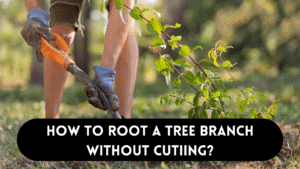Moss growth on trees is a common issue that can hinder the health and aesthetics of your precious green companions. But fear not! This guide will explore several methods to remove moss from trees, ensuring their well-being and beauty. It’s essential to follow eco-friendly techniques that safeguard trees and the environment.
Methods to Remove Moss from Trees
Removing Moss by Hand
Removing moss by hand is a gentle and non-invasive method suitable for dealing with light moss growth. Here’s how you can do it:
- Wear gloves to protect your hands while handling the moss.
- Gently peel or pick off the moss from the tree bark.
- For stubborn remnants, use a soft-bristled brush to scrub them away. By employing this method, you’ll be able to eliminate moss without causing harm to the tree’s delicate bark.
Using a Non-Toxic Moss Killer
For slightly more persistent moss growth, a non-toxic moss killer can be a game-changer. Follow these steps:
- Spray the moss-infested areas with a non-toxic moss killer.
- Allow the moss killer to work its magic for 1-2 days.
- Once the moss has died off, use a soft broom or brush to remove it gently.
- For any remaining moss residue, a hose or gentle pressure washer can help wash it away.
- Pruning the tree branches to let more sunlight in can also deter moss from returning.
- Fertilizing the trees will strengthen them, making them more resistant to future moss growth.
Using a Pressure Washer
When facing a more substantial moss presence, a pressure washer can come to the rescue. Follow these guidelines:
- Maintain a safe distance of about five feet from the tree to avoid damaging the bark.
- Use the pressure washer to separate the moss from the tree’s surface gently.
- The force of the water will dislodge the moss without harming the tree itself.
- Be cautious and use low-pressure settings to ensure the tree’s safety.
Chemical Treatment
Chemical treatments can be a cost-effective solution for particularly stubborn moss infestations. However, this method should be approached with care:
- Consider spraying the trees with a Spanish moss herbicide.
- Be mindful of the potential environmental impact and follow instructions correctly.
- Exercise caution while using chemicals, keeping them away from water sources and other plants.
- Always wear protective gear when handling herbicides.
Pruning Tree Branches
Moss thrives in shaded areas, so pruning your tree branches can be an excellent follow-up step after moss removal:
- Trim back overhanging limbs to increase sunlight exposure on the tree trunk and branches.
- Remove any dead or damaged limbs where moss is likely to flourish.
- Consider removing lower limbs that receive inadequate sunlight, further discouraging moss growth.
Post-Moss Removal Care
After successfully removing moss from your trees, proper post-care is essential to maintain their health:
- Regularly inspect your trees for any signs of new moss growth.
- Ensure they receive ample sunlight to deter future moss colonization.
- Provide the trees with adequate nutrients through proper fertilization.
- Practice consistent tree maintenance to prevent moss from becoming a recurring issue.
Hiring Professional Tree Care Service
If you find moss removal overwhelming or need assistance, don’t hesitate to seek help from a professional tree care service:
- Professional arborists have the expertise and equipment to handle moss removal effectively.
- They can identify potential risks and recommend appropriate solutions for long-term moss control.
- Choose reputable tree care services that prioritize eco-friendly practices to protect both trees and the environment.
FAQ 1: What are the risks of leaving moss on trees?
Leaving moss on trees might seem harmless, but it can pose several risks to your tree’s health and overall well-being. Here are some potential issues to consider:
- Reduced Sunlight Absorption: Moss can create a thick layer on the tree’s bark, hindering sunlight from reaching the tree’s surface. Trees rely on sunlight for photosynthesis, which produces energy for growth and sustenance. With reduced sunlight absorption, the tree’s health may decline over time.
- Moisture Retention: Moss is highly absorbent and tends to retain moisture. While moisture is essential for trees, excessive and prolonged moisture retention can lead to rot and decay in the tree’s bark. This can compromise the tree’s structural integrity and make it susceptible to diseases and pests.
- Increased Weight: As moss accumulates on the branches and trunk, it adds unnecessary weight to the tree. This additional burden can strain the tree and make it more vulnerable to breakage during storms or strong winds.
- Invasive Behavior: In some instances, moss can grow into the tree’s crevices and cracks, potentially harming the tree’s bark or even reaching the inner layers of the tree. This invasive behavior can weaken the tree and provide entry points for pathogens.
- Habitat for Pests: Moss can create a favorable environment for various pests and insects. Some pests, like bark beetles, find moss-covered trees attractive and may use the moss as a breeding ground. Consequently, this can lead to infestations that harm the tree’s health.
- Aesthetics: While aesthetics may not directly impact tree health, moss-covered trees can look unsightly and unkempt, detracting from the overall appeal of your landscape.
In conclusion, leaving moss on trees can adversely affect their health and appearance. It’s essential to take proactive measures to remove moss and maintain a healthy environment for your trees.
FAQ 2: What is the best time of year to remove moss from trees?
The best time to remove moss from trees depends on the climate and the type of tree you are dealing with. However, in general, the ideal time for moss removal is during the dry season or late winter/early spring. Here’s why:
- Dry Conditions: Moss thrives in damp and shaded areas. By choosing a dry period for removal, you can minimize the chances of the moss regrowing quickly.
- Favorable Growth Conditions: During late winter and early spring, trees are dormant, and the moss is actively growing. Removing moss during this period allows you to tackle the problem before it becomes too dense.
- Preparation for Spring Growth: Removing moss in late winter helps prepare the tree for the upcoming growing season. By clearing the moss, you enable the tree to make the most of the available sunlight and nutrients, promoting healthy spring growth.
- Reduced Stress on the Tree: During the dormant season, the tree is less stressed, making it more resilient to the moss removal process. This minimizes the risk of damaging the tree during the removal process.
Remember that if you reside in an area with a different climate, it’s essential to consider the local weather patterns and the specific tree species before scheduling moss removal.
FAQ 3: What are some chemical treatments for removing moss from trees?
While chemical treatments can be effective for removing moss, they should be used cautiously and only when necessary. Here are some chemical treatments commonly used to remove moss from trees:
- Copper Sulfate: Copper sulfate is a popular choice for moss removal. It effectively kills moss on contact and prevents its regrowth. However, it should be used sparingly as excessive use can harm the tree and soil.
- Zinc Sulfate: Zinc sulfate is another chemical option for moss removal. Like copper sulfate, it eliminates most effectively, but it should be applied carefully to avoid damaging the tree.
- Potassium-based Moss Killer: Potassium-based moss killers are less environmentally harmful and can be an eco-friendly alternative. These treatments work by desiccating the moss, causing it to dry up and die.
- Iron-Based Moss Killer: Iron-based moss killers are safe for most trees and plants. They work by oxidizing the moss and turning it brown, making it easier to remove manually.
Before using any chemical treatment, it’s crucial to read the instructions carefully, apply the product in recommended amounts, and avoid direct contact with the tree’s foliage.
FAQ 4: How do I get rid of moss on my trees?
To get rid of moss on your trees effectively, you can follow these steps:
- Assessment: Evaluate the extent of moss growth on your trees and identify the areas that need attention.
- Manual Removal: If the moss growth is light, you can remove it by hand. Wear gloves and gently peel or pick off the moss from the tree bark.
- Non-Toxic Moss Killer: Consider using a non-toxic moss killer for slightly thicker moss growth. Apply it as per the manufacturer’s instructions, and let it work for the recommended time.
- Gentle Cleaning: Use a soft broom or brush to remove the moss after the moss has died off gently.
- Pressure Washing (Optional): If necessary, use a pressure washer to separate the moss from the tree’s surface. Be cautious and stand back to avoid damaging the bark.
- Pruning: After moss removal, prune the tree branches to allow more sunlight to reach the previously mossy areas.
- Post-Care: To prevent moss from returning, maintain proper tree care, including adequate sunlight, fertilization, and regular maintenance.
Remember to approach moss removal gently to avoid damaging the tree, and consider seeking professional help if you need clarification on the process.
FAQ 5: What is the easiest way to remove moss?
The easiest way to remove moss from trees is through manual removal. Follow these simple steps:
- Wear Protective Gear: Wear gloves to protect your hands while handling the moss.
- Gently Peel Off Moss: Use your hands to gently peel or pick off the moss from the tree’s bark. Be cautious not to damage the tree while doing so.
- Soft-Bristled Brush: Use a soft-bristled brush to scrub the moss off the tree’s surface for any stubborn remnants.
- Post-Care: After removing the moss, consider pruning tree branches to allow more sunlight and proper fertilization for the tree.
Manual removal is the easiest method and the safest for both the tree and the person removing the moss. You may combine manual removal with non-toxic moss killers or other treatments for larger infestations to achieve the best results.




